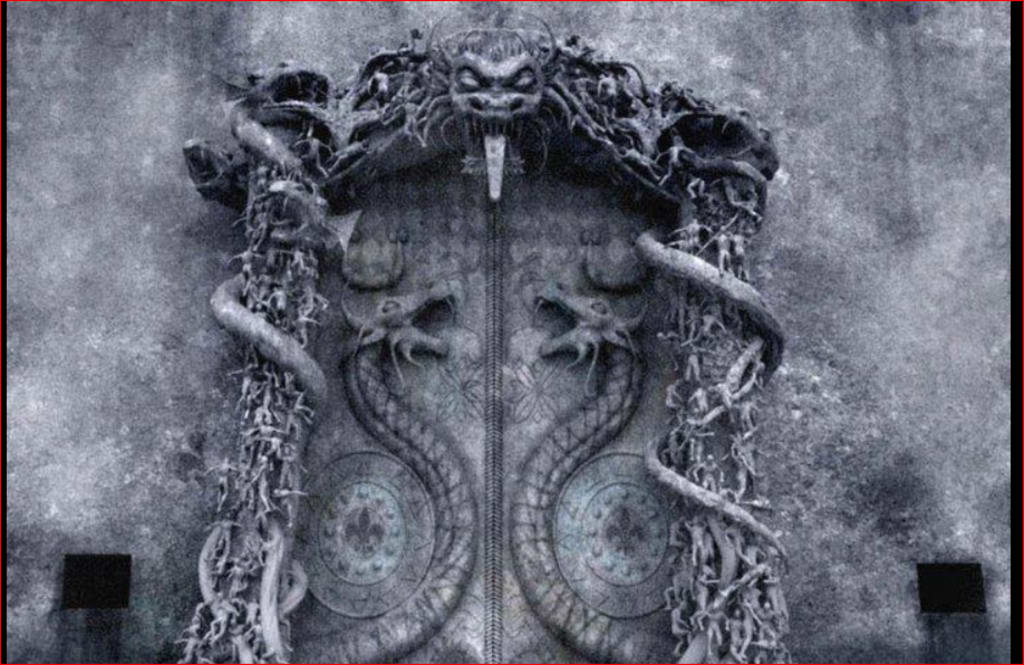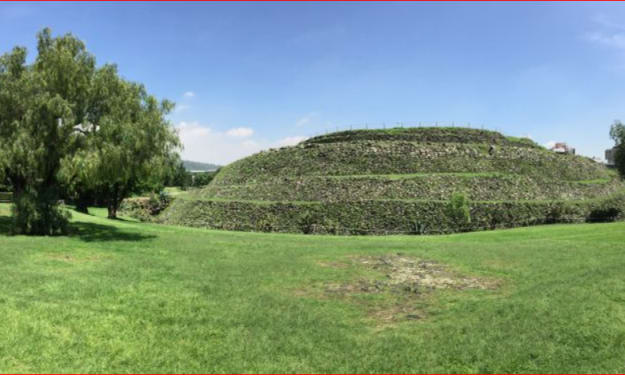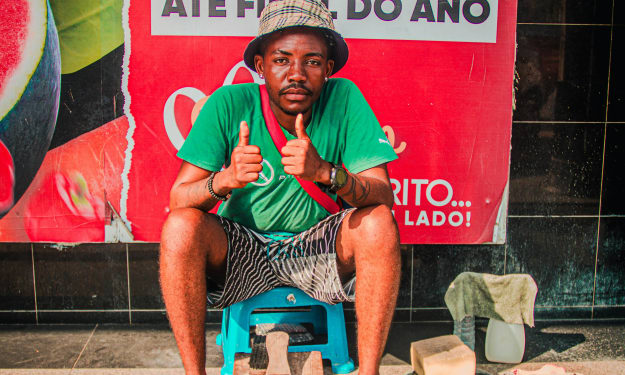The Mysterious Last Door at Padmanbhaswamy Temple
The Inviolable, third, and final door

In a world that has been around for millennia, with endless individuals that have come and gone, it's gullible to imagine that there aren't things those individuals left behind. Our predecessors have passed down to the cutting edge as much data as possible, yet, what might be said about those antiquated information that has been lost through time?
Is it our obligation as current occupants of the world to reveal those insider facts? Or, on the other hand, did they get covered under the sand of time on purpose? Maybe one of those old mysteries is the Sri Padmanabhaswamy sanctuary. This sanctuary is, however old as the confidence that may be rehearsed in it, Hinduism. Situated in Kerala, India, this sanctuary is named the most extravagant sanctuary in the entire world.
One gander at the lovely construction parts with the notoriety for the whole design is canvassed in real gold. This old sanctuary is delightfully constructed and is an excellent representation of a blend of Keralan and Dravidian design, styles that are famous among Hindu sanctuaries, particularly in the territory of Kerala. Nonetheless, the Padmanabhaswamy sanctuary has something that makes it stand out from the rest. It's not the brilliant outside, but something different and undeniably more puzzling. It is expressed that this antiquated Hindu sanctuary might be one of the best fortune known to man. The Sri Padmanabhaswamy sanctuary's set of experiences returns to 500 B.C. and 300 A.D.
At the point when it was referenced in a few texts during India's Sangam Time of writing. Basically, similar to any sanctuary, it fills in as a spot of love for a specific divinity and explicitly for the Padmanabhaswamy sanctuary. Its essential god is Vishnu which the nominal Sri Padmanabha addresses. It's one of the 108 Vaishnavite sanctums, and its access is just conceded to Hindus. There is no careful date with respect to when this sanctuary was fabricated, yet one thing is without a doubt, it's been there for quite a while, and it will remain there long after a large portion of us are no more. It is a direct result of this rich, however, lost history that the Indiana Jones inside us all put the Padmanabhaswamy sanctuary's baffling presence free from the profundities of dead Hindu information and into the 21st hundred years. With a request from the Indian High Court in 2011, the six known vaults under the sanctuary were investigated, and what was found inside them shook the whole world. The open vaults held incredible fortune, further establishing the sanctuary's title. They contained valuable stones and metals, old antiquities, and gold. Gold coins dated around 200 B.C., brilliant pieces of jewellery and crowns, and, surprisingly, a strong gold sculpture of the god of the sanctuary, Padmanabha. The fortune viewed was all assessed as worth billions of dollars. This was supposed to be one of the greatest fortune tracks down in history, and that is all's not even the most astonishing part, out of the six vaults of the sanctuary, just five were totally opened.
The last vault, named Vault B by the Indian High Court, contains an entryway that leads to another chamber. The entryway, similar to the sanctuary, is delightfully embellished, perhaps not somewhat terrifying. Cut on the entryway are two goliath cobras, said to be alerted to anybody who needs open it and uncover the mysteries inside. There are no locks or bolts, not so much as a keyhole, no different passage method except a custom performed by a "sadhus" or Hindu priest who should be sufficiently strong to perform the "Garuda Mantra" or serenade. There is right now no known individual able to do such. That is why this inward sanctum has been fixed for quite a long time, and nobody knows precisely the exact thing inside.
Much data about the sanctuary and its vaults are lost on the sanctuary authorities, even for the Travancore regal family whose trust the sanctuary is under. In any case, if the significant measure of abundance from different vaults is of any sign, then it would be sensible to feel that this vault also will carry treasure with it… and perhaps more, on the off chance that the cobras' admonition on the entryway of the internal vault had any reality to them. The apprehension that the admonition has earned perhaps one reason why the vaults of this sanctuary have stayed immaculate over time; however, the 2011 High Court request didn't simply come from unadulterated interest of would-be treasure trackers and archaeologists yet, in addition, something not so much puzzling but somewhat more functional.
In 2007, a claim that blamed the Travancore family for sanctuary botch and utilizing the sanctuary's abundance for their own was recorded by Ananda Padmanabhan, a legal counsellor from Trivandrum, Kerala. Padmanabhan, a man energetic ever, learned of the historical backdrop of the sanctuary. Since its foundation, royals of India would have luxurious wealth upon wealth out of appreciation for the god of the sanctuary. Functions would try and be held wherein maharajas would give the heaviness of the sovereigns moving toward adulthood in gold. He accepted that the fortunes were still inside the sanctuary, and he dreaded it very well might be abused by the illustrious family. With his claim, the Indian government requested a stock of sanctuary treasures. Notwithstanding, it appears to be that this wasn't whenever the Indian government first attempted to investigate the sanctuary.
As per a movement guide of Travancore, an old Indian realm currently part of current Kerala, composed by a remarkable English creator, the 2011 disclosure was not the first; however, it was the one that found the most fortunate. In 1908, there was a bombed endeavour to open the vaults because the voyagers immediately left when they found the chambers pervaded with cobras. Nonetheless, in 1931, when the territory of Kerala was monetarily out of luck, another endeavour was made to penetrate the vaults, and this time it was fruitful, with no less than one of the vaults opened and good fortune found. With respect to different vaults, it would be 80 years before their fortunes would be seen as yet, not Vault B, which has stayed shut and keeps on being to the rest of the world.
Presently, India's public authority is attempting to open the fixed entryway inside Vault. The Travancore imperial family, alongside numerous strict aficionados, have pursued the public authority's request for one more investigation of the leftover vault. A custom called Devaprasnam was held to know the divinity's desire for the sanctuary's destiny and its fortunes. In the custom, a young man might act as the instrument through which the god would cooperate and convey his desires. After the Devaprasnam, the divinity was obviously unsatisfied, wishing the fortunes not to be upset and the last vault not to be opened or the consequences would be severe. Per the crystal gazers who played out the custom, the launch of the internal chamber will cause untold devastating occasions of prophetically calamitous extents.
A fight in court is still being pursued in India's courts. There are numerous suppositions on how to manage the fortune found. Some say it should be utilized to help individuals of Trivandrum, the city in Kerala where the sanctuary dwells. However, strict lovers would agree in any case. For them, it isn't correct that the public authority dunks their hands in the sanctuary money chests for
comparative episodes of the public authority attempting to stock the abundance of Christian chapels in the state was halted due to serious resistance. So why would it be advisable for it not to be no different for the Padmanabhaswamy? Something else is, since the fortune was given to the divinity, it should stay with the god.
In India, divinities can claim property, but they are viewed as minors and must have "grown-ups" to direct it. Thus, the Travancore family reasserts their legitimate obligation to supervise the sanctuary and its fortune. Until further notice, the destiny of the Sri Padmanabhaswamy sanctuary stays up in the air. The god of the sanctuary has given his opinions; however, in this day and age and in a country that needs funds to cure its financial issues, what weight do these legends and alerts have? Will reasonableness prevail upon religion and odd notions? Anything choice will be made, and it should be the right one because the entire world is watching and perhaps, quite possibly, even Vishnu himself, and nobody, positively not the individuals of Kerala, needs an end times on their hands.
About the Creator
Frank Schulz
I have an insatiable curiosity for the wonders of science, the depths of history, and the intricate tapestry of human interest subjects. I immerse myself in the captivating worlds of discovery and understanding.
Enjoyed the story? Support the Creator.
Subscribe for free to receive all their stories in your feed. You could also pledge your support or give them a one-off tip, letting them know you appreciate their work.





Comments
Frank Schulz is not accepting comments at the moment
Want to show your support? Send them a one-off tip.